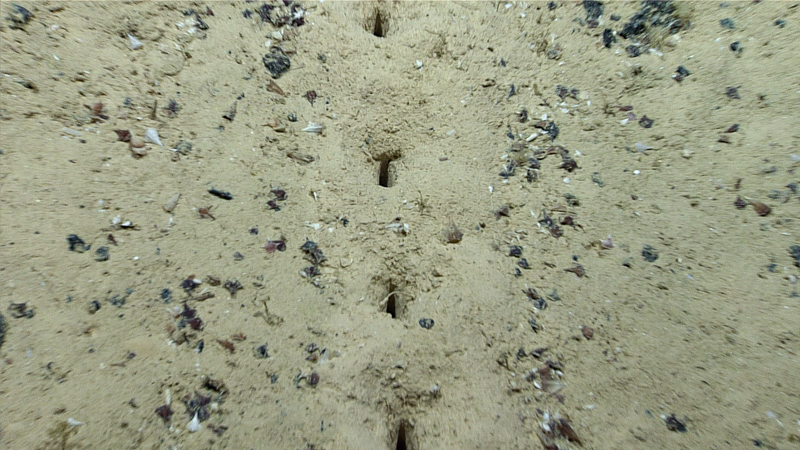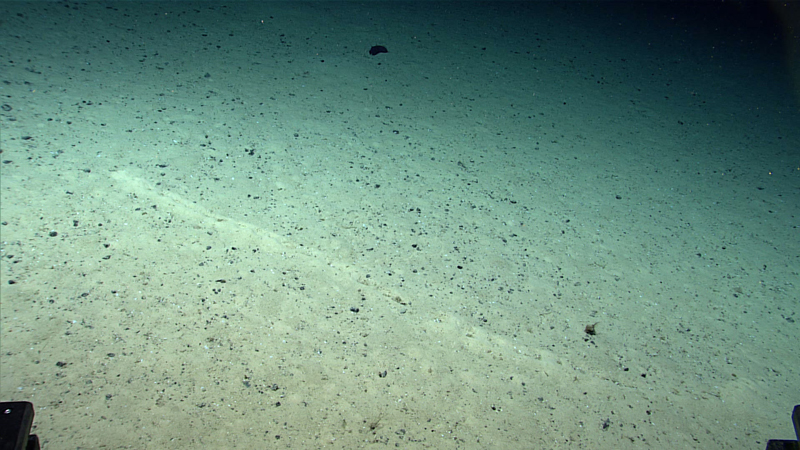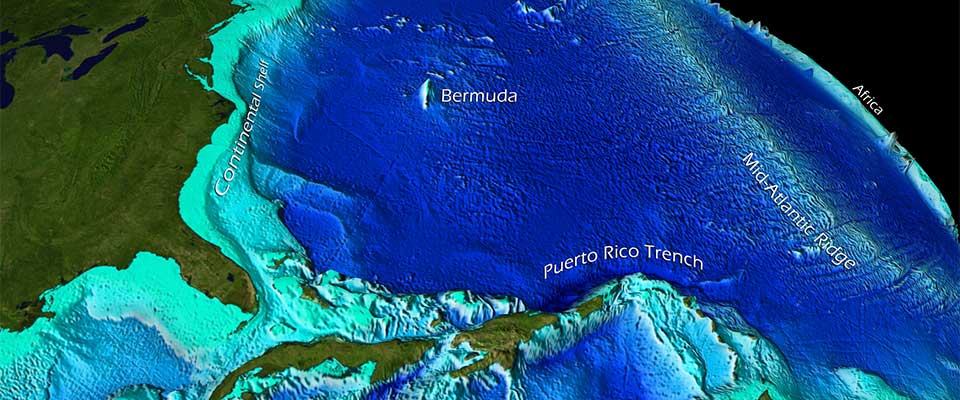
Posted on 07/29/2022 10:55:42 AM PDT by Red Badger

(National Oceanic and Atmospheric Administration)
During a recent expedition to the largely unexplored depths of the northern Mid-Atlantic Ridge, marine researchers stumbled upon something odd: tiny holes excavated in the sediment, all arranged in dozens of relatively straight lines.
Holes on the sea floor wouldn't usually be too perplexing, but these were dotted in an incredibly neat and evenly spaced pattern. If not for the fact they're located roughly 2.5 kilometers (1.6 miles) below the surface of the Atlantic Ocean, in the middle of nowhere, they could have been engineered by human hands.
Researchers on board the US National Oceanic and Atmospheric Administration (NOAA) vessel Okeanos Explorer used a robotic submersible to explore an underwater volcanic ridge north of the Azores archipelago, near mainland Portugal on July 23.
Now the NOAA researchers are asking for help from the public to figure out what the heck they just saw.
Roughly a week later, the researchers identified four more sets of the holes around 483 kilometers (300 miles) away, at 1.6 kilometers (1 mile) deep.

Close up of the holes. (NOAA)
"While the holes look almost human made, the little piles of sediment around them suggest they had been excavated. We attempted but were not able to take a peek into the holes and poke them with the tools on the remotely operated vehicle," the NOAA wrote in a press release.
To add to the mystery, it's not the first time scientists have seen holes like these. They've perplexed researchers for at least 20 years. A 2004 paper reported on a sighting in the same region that year. The researchers referred to them as "lebensspuren" to describe the holes, which translates to "life traces" in German.
"The source of the holes or how they were constructed is unknown, but the raised sediment may indicate excavation by an infaunal organism or digging and removal," the authors wrote at the time.
"None of our closeups showed any sign of living organisms inhabiting the holes. Whether the holes were connected beneath the sediment surface was not visible."
Since then, we haven't found out much more about the holes, but it's hoped that this mission may provide some answers. As a part of the recent expedition, the researchers were able to sample sediment from around the holes using the submersible's suctioning device in the hopes it may shed light on whether or not something lives in there.

Another view of the holes. (NOAA)
Having worked on both the recent exploration and the 2004 paper, NOAA deep-sea biologist Michael Vecchione has a vested interest in knowing what lurks below the Mid-Atlantic sands.
"There is something important going on there and we don't know what it is," Vecchione told Christine Chung from the New York Times.
"This highlights the fact that there are still mysteries out there."
Covering an impressive 16,000 kilometers (10,000 miles), the Mid-Atlantic Ridge is the longest mountain range in the world – despite the fact that most of us have never laid eyes on it.

midoceanridge (NOAA)
We don't know much about the iconic region, which is why it's the focus of NOAA's Voyage to the Ridge 2022 expedition, from May to September 2022.
They're also looking at the Charlie-Gibbs Fracture Zone, which interrupts the ridge, and the Azores Plateau, which is located to the east of the Mid-Atlantic Ridge and is where three major tectonic plates converge.
VIDEO AT LINK..........................
As you can imagine with all this activity, the Mid-Atlantic Ridge is an earthquake hotspot, and is also home to stunning hydrothermal vents where magma provides the heat used by life living at the extremes of the deep seafloor.
The Voyage to the Ridge 2022 missions hope to find out more about that life, including the source of the weird holes.
There's one more dive schedule for this part of the expedition, which you can watch live on August 7.
Who knows what other mysteries are yet to be uncovered.
Sure, maybe some amateur or pro divers or oil explorers have seen these before..............................
Ahhhh, I did a search using the key words scientists and holes, and found a message that said “archived” posts expire AFTER ONE HOUR, which limits search to only the most current post(s) with either the key words or titles searched on.
In terms of Jim needing to conserve the servers resources, and thus the FreeRep expenses, I can understand that.
If I win the mega millions I’ll make sure Jim/FreeRep has lots more resources with a permaent endowment making regular big annual donations.
1.6 miles down.
Mini-sub owners, then. Or former military submariners.....................
It seems to me that a line or two of code could be inserted to pre-screen out duplicate posts................
Sigourney Weaver, Jon Voight and moi put those holes there.
I apologize for all the excitement it created.
5.56mm
> What about the holes in Blackburn, Lancashire?
Those holes were fixed because the rain was getting in. It stopped their minds from wondering.
Between you and me, Google works better for searching FR than FR does.
This post will self destruct in 30 seconds...
5.56mm
The lost city of Atlantis?
I think it is not code but server resources that improved searches would consume. Just my guess.
Looks to me like it is some type of sea creature spawning site.
Mysterious holes discovered on ocean floor puzzle experts, spawn aliens theory
07/27/2022 10:13:11 AM PDT · by bitt · 62 replies
nypost ^ | 7/27/2022 | ben cost
https://freerepublic.com/focus/f-chat/4081362/posts
“The lost city of Atlantis?”
Yeah.
Article is written to make people think that sort of nonsense.
It does say infaunal, meaning clams or sea worms etc...
The poor quality of articles on interesting topics bugs me.
Here’s another from this article.
“Having worked on both the recent exploration and the 2004 paper, NOAA deep-sea biologist Michael Vecchione has a vested interest in knowing what lurks below the Mid-Atlantic sands.”
Author doesn’t know what vested interest means.
It means having a vest on!............................😁
Yes. That’s it.
I think it’s Greenpeace trying to stop the rising ocean levels.
The holes are open because there is fluid flow through them or they would otherwise be closed. Analyze the flow. They are probably products of a decomposition process. They may contain nasty fossil fuels.
Send all greenies to the bottom(without diving gear)to plug the holes.
They need to send a scientist down there to stick his finger in one... see if there’s anything in there.
Send the “scientists” who told us to trust the science.
Disclaimer: Opinions posted on Free Republic are those of the individual posters and do not necessarily represent the opinion of Free Republic or its management. All materials posted herein are protected by copyright law and the exemption for fair use of copyrighted works.